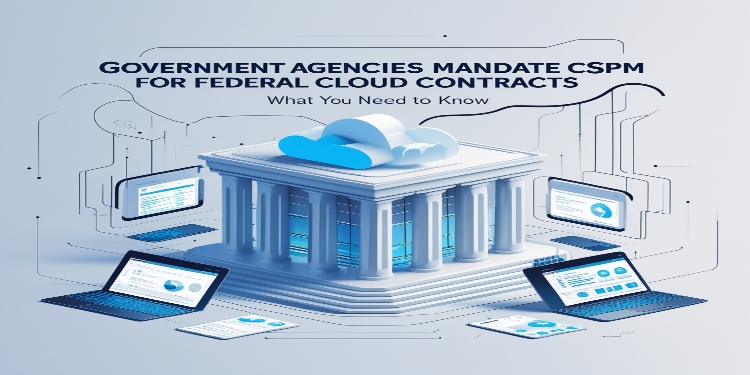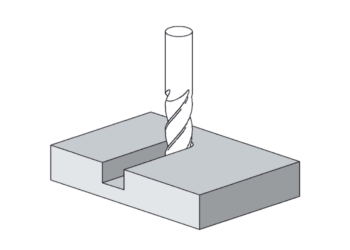Cloud adoption in the public sector is no longer a trend—it’s a transformation in motion. Federal agencies are rapidly shifting workloads to the cloud to capitalize on its cost-efficiency, scalability, and agility. In fact, as of 2025, nearly 26% of organizations report running significant workloads on Amazon Web Services (AWS). With cloud computing maturing and “as-a-service” models becoming the norm—from infrastructure to software—governments are embracing this shift to modernize operations and improve service delivery.
But this acceleration also brings sensitive risk. Misconfigurations, compliance gaps, and lack of visibility into extensive cloud environments have made cloud security posture a pressing concern. Enter Cloud Security Posture Management (CSPM) tools—automated solutions designed to continuously monitor, evaluate, and remediate risks across cloud infrastructures.
Recognizing the critical need for visibility and control, U.S. federal agencies have started requiring the integration of CSPM tools in federal cloud contracts. This move aims to safeguard sensitive data, ensure regulatory compliance, and enhance cyber resilience across platforms like AWS, Microsoft Azure, and Google Cloud Platform (GCP). Understanding the AI services available on these platforms, a core topic in the ai 900 curriculum, is a key part of building a secure and modern cloud infrastructure.
In this article, we delve into why CSPM tools are becoming crucial in the public sector, how federal agencies are embedding them into their security frameworks, and which tools are setting the standard in modern cloud defense.
Cloud computing as-a-service
Cloud computing delivered as-a-service has reshaped how organizations access and manage technology. Instead of investing heavily in physical infrastructure, companies now rely on third-party providers for computing power, storage, software, and more available on demand and scaled as needed. This model has opened doors for startups and enterprises alike to adopt powerful digital tools without the overhead of managing their own data centers.
The demand continues to surge. In 2024, global spending on public cloud services reached approximately $595 billion, and it’s projected to grow to $723 billion by 2025. The biggest driver? Cloud application services, or SaaS, which remains the largest and fastest-expanding segment. Microsoft’s financials reflect this trend. In 2024 alone, it reported $105 billion in revenue from its Intelligent Cloud division and $77 billion from productivity and business services—contributing to its most successful year to date with total revenue surpassing $245 billion.
This growth signals a broader shift: cloud as-a-service isn’t just a convenience—it’s becoming the default IT model.
Why Cloud Security Posture Management Matters
In cloud environments, security operates on a shared responsibility model. That means certain tasks—like securing physical infrastructure—are handled by the cloud provider, while others—like configuring access controls or managing user data—are the responsibility of the organization using the cloud. These responsibilities shift depending on the model: Infrastructure-as-a-Service (IaaS) users have more security responsibilities than those using Software-as-a-Service (SaaS).
The challenge arises when organizations don’t fully understand or fulfill their part. For instance, a federal agency using AWS might spin up a new storage bucket for sensitive data but forget to properly configure the permissions—accidentally making it public. This kind of misconfiguration is common and can lead to data exposure.
That’s where Cloud Security Posture Management (CSPM) tools come in. CSPM tools are security solutions designed to automatically identify and remediate misconfigurations in cloud environments. They provide:
- Real-time monitoring of compliance and risk
- Policy enforcement based on industry and federal standards
- Visibility into cloud resources and configurations
- Automated alerting and remediation workflows
CSPM tools are especially important in multi-cloud environments where configurations vary across platforms like AWS, Azure, and GCP.
These tools automatically scan cloud environments to detect misconfigurations like open storage buckets, unused access keys, or overly broad user permissions.
To understand it better let’s look at this example. A CSPM tool would detect the publicly accessible AWS S3 bucket, flag it as a critical risk, and either alert the security team or automatically remediate the issue—depending on the configuration.
This continuous monitoring helps federal agencies maintain a secure, compliant cloud posture without relying on manual checks.
Cloud Service Models and Shared Responsibilities
Federal agencies use cloud products under different service models:
- IaaS (Infrastructure as a Service): Agencies manage most components, so more security responsibility lies on their shoulders.
- PaaS (Platform as a Service): The CSP manages more, reducing agency responsibilities.
- SaaS (Software as a Service): The CSP handles most of the security stack.
No matter the model, the agency must ensure its systems comply with its Authorization to Operate (ATO)—a decision made by a senior official accepting any residual security risks.
The Role of CSPM in Achieving and Maintaining ATO
To obtain an ATO, agencies must show they understand their cloud environment and have tools in place to manage risks. Cloud security posture management tools help agencies:
- Map security controls to NIST frameworks
- Continuously monitor compliance with FISMA and FedRAMP
- Automatically report and remediate security gaps
- Support audit processes with logs and dashboards
Federal Push for CSPM: What Changed?
The push for cloud security posture management tools in federal contracts stems from several government initiatives:
1. FedRAMP Authorization Process
FedRAMP evaluates cloud services for security risks and provides a reusable framework for federal ATOs. Agencies use top cloud security posture management tools to inherit security controls and streamline audits.
2. DHS-CDM Program
Through DHS-CDM, agencies get near real-time asset tracking and security assessments. The best cloud security posture management tools are now included in the DHS-CDM Approved Products List, allowing agencies to align with federal supply chain and security requirements.
3. DoD CC SRG for Defense Agencies
The DoD’s version of FedRAMP—called FedRAMP+—includes additional requirements. CSPM tools help defense systems meet DoD Impact Levels (IL2 to IL6), aligning configurations with national security standards.
4. Trusted Internet Connections (TIC)
As TIC modernizes network security, CSPM tools support compliance by mapping to TIC use cases and detecting policy violations across cloud resources.
These frameworks require not just compliance at a point in time but continuous oversight—something only CSPM tools can efficiently offer.
CSPM Tools Tailored for AWS, Azure, and GCP
Every cloud provider has unique architectures and compliance offerings. That’s why agencies look for cloud security posture management tools for AWS, cloud security posture management tools for Azure, and cloud security posture management tools for GCP.
Top features federal agencies look for:
- AWS: IAM misconfigurations, S3 bucket auditing, EC2 security groups.
- Azure: Role-Based Access Control (RBAC), Azure Policy compliance, Key Vault monitoring.
- GCP: Cloud IAM, Firewall Rules, Cloud Storage configuration.
Top Cloud Security Posture Management Tools for Government
Government agencies operating in the cloud require tools that not only provide visibility and compliance but also align with evolving regulatory and security standards. CSPM tools are instrumental in continuously monitoring cloud environments for misconfigurations, unauthorized access, and policy violations.
Among the available options, Cyble’s Cloud Security Posture Management solution stands out for its emphasis on visibility, automation, and integration. It supports organizations in identifying potential security gaps, enforcing compliance policies, and reducing risk exposure across multi-cloud and hybrid infrastructures. By integrating with platforms like Cyble Vision and CybleHawk, the CSPM tool enhances situational awareness, connecting internal cloud telemetry with external threat intelligence for faster, more contextual decision-making.
These capabilities are increasingly vital as government workloads grow in complexity, requiring agile and proactive cloud security strategies.
CSPM Tools Beyond Compliance
Using CSPM tools is not just about checking boxes. These tools are essential for:
- Proactive security: Finding risks before they turn into breaches.
- Audit readiness: Streamlining documentation and evidence collection.
- Policy enforcement: Ensuring continuous alignment with standards.
- Threat detection: Identifying suspicious activity across workloads.
Some advanced tools even use deep search engine techniques to detect leaked credentials or configuration files across the dark web application landscape.
CSPM Tools and Uncensored Search Engines: An Unlikely Duo?
Some advanced CSPM vendors are integrating unblocked search engines, non censored search engines, and unrestricted search engines into their threat intelligence feeds. These help identify data leaks or infrastructure exposures that wouldn’t show up on traditional tools.
Using secret search engines, gibiru search engine, or excavator search engine, CSPM platforms can gather more comprehensive threat intelligence, including insights from search deep web engine results or dark web engine search platforms.
This kind of integration pushes CSPM tools beyond compliance monitoring into the realm of cyber threat intelligence (CTI).
The Future is Secure (and Automated)
The federal government’s move to require cloud security posture management tools (CSPM) in cloud contracts signals more than just a policy update; it’s a shift towards more secure, proactive cloud environments. With the rapid growth of cloud infrastructure, adopting top cloud security posture management tools has become a must for agencies, helping them stay ahead of evolving threats and ensuring continuous compliance.
These tools are not just about monitoring—they’re about taking action. Whether it’s detecting misconfigurations, enforcing security policies, or ensuring that cloud services are always aligned with federal standards, the best cloud security posture management tools are designed to address the complexities of platforms like AWS, Azure, and GCP.
For federal agencies, contractors, and IT professionals, integrating CSPM tools is no longer optional. It’s the best way to keep up with increasing cloud security demands while making sure that your cloud environments are both secure and compliant.











































































